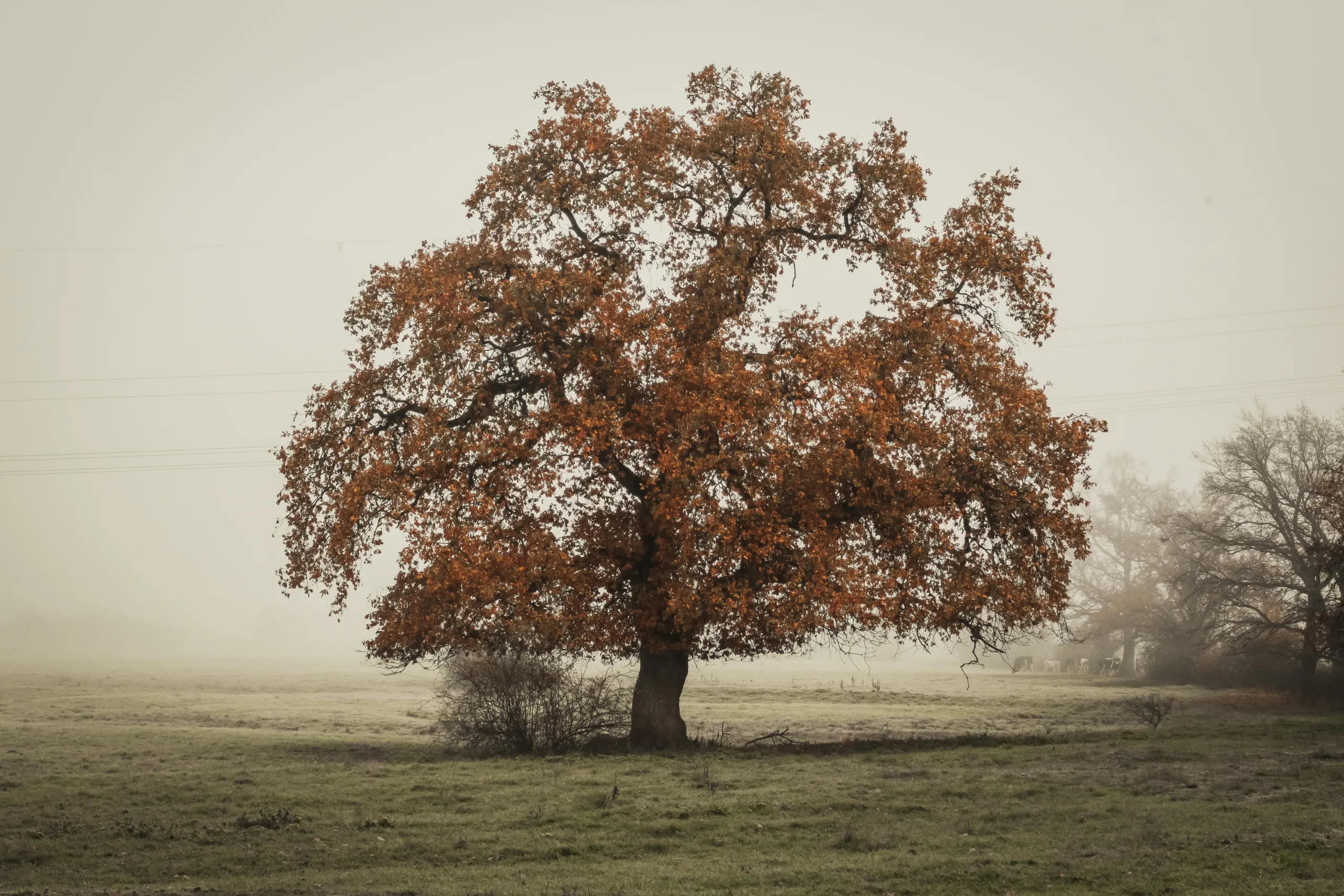Pruning a willow tree can be intimidating and overwhelming for the uninitiated. Knowing when and how to prune a willow tree is essential for its health, growth and structural integrity. Pruning willow trees correctly can help improve the shape of the tree, encourage new growth, reduce the risk of disease and even extend the life of the tree. In this article, we’ll provide an overview on how and when to prune a willow tree. We’ll answer questions like: How do you prune a willow tree? What is the best time to prune a willow tree? And what are some common mistakes to avoid when pruning a willow tree?
There are several types of willow trees that are suitable for pruning, including Weeping Willow (Salix babylonica), Pussy Willow (Salix discolor), and Dwarf Arctic Willow (Salix arctica). All of these varieties are known for their fast growth, making them ideal for shaping and pruning.
The Benefits Of Pruning Willow Trees
Pruning willow trees is an important part of maintaining the health and beauty of your landscape. Pruning willow trees can help to promote healthy growth, as well as provide protection from disease and pests. Pruning willow trees also helps to maintain their size and shape, allowing for a more aesthetically pleasing look in your yard. Additionally, pruning willow trees can help reduce storm damage by removing weak or dead branches that are more susceptible to being blown down in windy conditions. By pruning willow trees regularly, you can ensure that they stay healthy and look their best throughout the year.
One of the main benefits of pruning willow trees is that it helps to improve air circulation in order to reduce pest infestations. Properly pruned willow branches allow for better access to sunlight and air, both necessary elements for healthy growth. Pruned branches also allow for better access to water, making it easier for roots to absorb nutrients from the soil. Removing dead or diseased branches also helps prevent the spread of disease throughout your landscape.
Pruning willow trees also helps improve aesthetics by creating a more attractive appearance in your yard or garden. By removing unwanted growth or deadwood, you can create a cleaner look and make sure that only healthy branches remain on the tree. Pruned branches also give your tree a more symmetrical appearance which can add visual appeal to any landscape design. Additionally, by pruning away weakened branches, you can help prevent them from falling during storms which could cause damage to nearby structures.
Finally, pruning willow trees is beneficial because it allows you to shape them into desired forms such as formal hedges or topiaries. This type of shaping requires careful trimming and regular maintenance in order to achieve desired results but can be very rewarding once completed. Pruned shapes are often used as decorative elements in landscapes and gardens which adds another layer of visual interest.
Overall, pruning willow trees is an important part of maintaining their health and beauty in your landscape. Regular pruning promotes healthy growth, reduces pest infestations, improves aesthetics, prevents storm damage, and allows for creative shaping designs which all add up to a healthier and more attractive looking yard or garden. So if you have a willow tree in your landscape, don’t forget about proper maintenance through regular pruning!
When To Prune A Willow Tree
Pruning a willow tree is an important part of maintaining its health and beauty. While pruning is beneficial, it should be done at the right time to ensure the best results. Generally, pruning should take place in late winter or early spring, when the tree is still dormant. This will give the tree time to heal before new growth begins in the spring. It’s also important to note that willow trees have a tendency to bleed sap if they are pruned during the growing season, so it’s best to avoid this time of year for pruning.
Before pruning your willow tree, it’s important to understand how much you should be cutting back. If you are removing branches that are dead or diseased, you can generally cut them back as far as necessary without having to worry about any negative impacts on the tree. However, for healthy branches, it’s best to limit your pruning to no more than one third of the branch length. This will prevent stressing your tree and help ensure its health and vigor in the future.
Finally, it’s important to use proper pruning techniques when cutting back your willow tree. This means using sharp pruning shears and making clean cuts that are angled away from the bud or branch collar on each branch that you are trimming. This will help minimize damage and encourage healthy new growth on your tree in the springtime.
How To Prune A Willow Tree
Pruning a willow tree is essential for promoting healthy growth and preventing disease. When pruning a willow tree, it is important to use proper pruning techniques to ensure the tree’s health and longevity. Here are some tips for how to prune a willow tree:
First, determine when the best time of year to prune your willow tree is. Pruning should be done in late winter or early spring, before new growth begins. This ensures that the wounds left by pruning can heal quickly and allow for rapid regrowth.
Second, decide which branches should be removed from your willow tree. If your willow tree is overgrown or has weak branches, it may be necessary to remove them in order to promote healthy growth. Branches should also be removed if they are dead, diseased, or crossing each other.
Third, use sharp, clean pruning shears when trimming your willow tree. This helps ensure that the cuts you make are precise and clean and can help prevent disease from entering the wound sites. Make sure you wear protective gear such as gloves and safety glasses while trimming.
Fourth, make sure that you do not remove too much of the canopy at once. Doing so can shock the tree and lead to poor health or even death. Instead, focus on removing only one-third of the canopy at a time in order to promote healthy regrowth.
Finally, make sure that you properly dispose of any trimmings that have been removed from your willow tree. Diseased branches should be disposed of separately in order to prevent disease from spreading throughout your garden.
By following these tips for how to prune a willow tree properly, you can ensure that your trees remain healthy for years to come.
Pruning a Willow Tree
Pruning a willow tree is an important part of keeping it healthy and ensuring that it grows properly. Pruning is the process of selectively removing parts of a plant to shape and maintain it. Pruning a willow tree requires the right tools to do the job correctly. The following tools are necessary for pruning a willow tree:
A pair of sharp pruning shears is essential for pruning a willow tree. These shears should be made of quality steel to ensure that they don’t become dull over time and can cut through even the toughest branches. A pole pruner can also be used to reach higher branches that are difficult to reach with regular shears.
A lopper is another important tool for pruning a willow tree. A lopper has longer handles than regular shears, making it easier to reach higher branches and cut larger sections of the tree at once.
Finally, a saw may also be necessary for thicker branches that cannot be cut with shears or loppers. A bow saw or reciprocating saw is best suited for this purpose as they can easily cut through thick branches without damaging them.
Using these tools correctly when pruning a willow tree can help keep it healthy and attractive for many years to come.

Preparing A Willow Tree For Pruning
Pruning willow trees require a bit of preparation to avoid damaging the tree. To ensure success when pruning your willow tree, it is important to properly prepare the tree beforehand. First, inspect the tree for signs of disease or damage. If you notice any issues, address them immediately before continuing with pruning. Next, determine which branches need to be removed and which need to be pruned back. This will help you plan your pruning strategy in advance.
To prepare for pruning, you should also consider the season and weather conditions. Pruning should only take place during periods of dormancy when the sap is not running and cold weather has set in. This ensures that the cuts heal quickly and do not cause further damage to the tree. Additionally, avoid pruning during periods of drought or extreme heat as this can stress the tree further.
Finally, it is important to use sharp tools when pruning your willow tree. Dull blades can crush or tear branches instead of making a clean cut which can encourage decay or infection in the wound area. Always use tools that are in good condition and properly disinfect them between each cut to prevent spreading disease from one branch to another. By following these steps, you can ensure that you properly prepare your willow tree for pruning before beginning work on it.
Caring For A Willow Tree After Pruning
It is important to properly care for a willow tree after it has been pruned. The best way to ensure that the tree stays healthy and grows optimally is to provide the right care and maintenance. Pruning a willow tree should be done with caution, as it can damage the tree if done incorrectly. Once the pruning is complete, there are a few steps you should take in order to ensure that your willow tree continues to thrive.
First, prune any dead or damaged branches that may have been missed during the initial pruning process. Dead or damaged branches can cause problems for your tree and should be removed immediately. In addition, trim any excess growth that is taking away from the natural shape of the tree. This will help maintain its overall health and structure.
After pruning, it is essential to water the tree regularly and deeply. Willow trees require a lot of water in order to stay healthy and grow properly, so make sure you are providing enough water for your tree. You may also want to add mulch around the base of your willow tree in order to help retain moisture and protect its roots from heat and cold.
Finally, fertilize your willow tree each year with an appropriate fertilizer designed for trees. This will help keep your willow healthy and strong by providing essential nutrients that can help promote growth and health. With proper care and maintenance, your willow tree can remain healthy for many years to come!
Removing Damaged Or Diseased Branches From A Willow Tree
Removing damaged or diseased branches from a willow tree is important to maintain its health and overall structure. Damaged branches can provide an entry point for pests and disease, while diseased branches can spread the infection to other parts of the tree. Knowing when and how to prune a willow tree is essential for keeping it healthy and attractive.
When removing damaged or diseased branches, it is important to know where to make the cuts. Making cuts too close to the branch collar can cause damage to the tree and may not be effective in removing the problem branch. Instead, make the cut at least 6 inches away from where the branch meets the trunk. This will help ensure that no further damage is done to the tree.
It is also important to take precautions when pruning a willow tree. Wear protective clothing, such as gloves and goggles, when handling sharp tools like pruning saws or shears. Always use clean tools that have been disinfected between uses with rubbing alcohol or a bleach solution, and avoid cutting into live wood if possible.
When pruning a willow tree, it is best to work on one branch at a time rather than trying to remove multiple branches simultaneously. This helps ensure that no further damage is done in the process and that all of the necessary cuts are made correctly. Prune away only dead or damaged branches and leave healthy ones alone; this will help promote new growth in areas where old growth has been removed.
Pruning a willow tree can be challenging but with proper techniques and precautions, it can be done safely and effectively with minimal damage to the tree’s health or appearance. Taking care of your willow tree will ensure its beauty for years to come!

Conclusion
Pruning the willow tree is necessary to ensure it remains healthy and aesthetically pleasing. It is recommended to prune in the late winter or early spring, as this will help prevent disease, stimulate new growth and encourage a fuller canopy. Always use sharp pruning tools and take care to remove dead, diseased or damaged branches first. The remaining branches should be cut back at least one third of their length. This will help create a strong structure for the tree, promote healthy growth and prevent overcrowding of the canopy.
When pruning, always consider the natural shape of the tree and its intended purpose before selecting which branches to trim. With proper pruning techniques, you can keep your willow tree healthy and beautiful for many years to come.
Overall, when it comes to how and when to prune your willow tree, take your time and carefully consider each branch before cutting it back. Pruning your willow tree in late winter or early spring is ideal for the health and appearance of your tree. Armed with these tips on how and when to prune your willow tree, you can keep it looking its best for many years to come!

My interest in trees started when I first saw the giant sequoias in Yosemite.
I was a teenager then, and I remember thinking, “I need to learn more about this.”
That moment stuck with me.
A few years later, I went on to study forestry at Michigan Tech.
Since graduating, I’ve worked in a mix of hands-on tree care and community education.
I’ve spent over ten years helping people understand how to plant, maintain, and protect the trees in their neighborhoods.
I don’t see trees as just part of the landscape.
They are living things that make a real difference in our daily lives.
